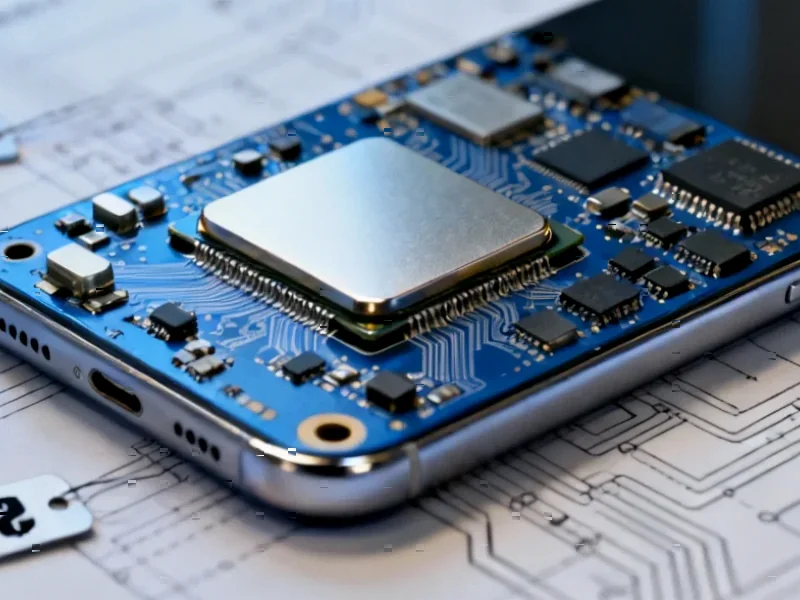According to Phys.org, a research team led by Professor Ji Tae Kim of KAIST, in collaboration with Korea University and the University of Hong Kong, has developed a room-temperature 3D printing technique capable of fabricating ultra-small infrared sensors smaller than 10 micrometers. The technology uses liquid nanocrystal inks and a “ligand-exchange” process that replaces insulating molecules with conductive ones, eliminating the need for high-temperature annealing that typically consumes massive energy in conventional semiconductor manufacturing. The research, detailed in Nature Communications, enables customized miniature sensors of various shapes and sizes for applications including LiDAR, 3D face recognition, and wearable healthcare devices. This breakthrough represents a potential paradigm shift in how next-generation electronics are manufactured.
The End of High-Temperature Semiconductor Dominance
Traditional semiconductor fabrication has been built around high-temperature processes that consume enormous energy and require massive capital investment in specialized facilities. The room-temperature approach fundamentally challenges this decades-old paradigm. What makes this particularly disruptive is that it doesn’t just reduce energy consumption – it enables manufacturing in environments where traditional fabs could never operate. Imagine sensor production lines integrated directly into automotive assembly plants or medical device facilities, eliminating the global supply chain dependencies that have plagued electronics manufacturing during recent chip shortages. The ability to print sensors at room temperature using nanocrystal inks could democratize production in ways similar to how 3D printing transformed prototyping, but now at commercial scale for functional electronics.
Winners and Losers in the Sensor Ecosystem
This technology creates clear market disruption vectors. Established semiconductor manufacturers who’ve invested billions in traditional fabrication facilities face potential stranded assets if room-temperature printing scales effectively. However, companies specializing in materials science – particularly those developing advanced nanocrystals and functional inks – stand to gain tremendously. The shift also benefits system integrators in automotive, consumer electronics, and medical devices who can now design sensors specifically for their form factors rather than being constrained by off-the-shelf components. Smaller, more agile companies could potentially leapfrog incumbents by adopting this manufacturing approach without the capital barriers of traditional semiconductor fabs. The supply chain implications are profound – we’re looking at potential localization of sensor production rather than concentration in a few global manufacturing hubs.
Beyond Miniaturization: The Form Factor Revolution
While the sub-10-micrometer scale is impressive, the real game-changer is the customization capability. Current infrared sensors come in standardized sizes and shapes because mass production economics dictate standardization. This technology enables sensors that conform to curved surfaces, fit into previously impossible spaces, or even create distributed sensor networks across surfaces. For autonomous vehicles, this could mean LiDAR sensors integrated seamlessly into body panels rather than bulky rooftop units. In healthcare, we could see wearable devices with sensors that wrap around limbs or conform to skin contours for continuous monitoring. The research paper indicates this isn’t just theoretical – the team has demonstrated functional devices, suggesting commercial viability within a few years given adequate investment and scaling.
The Green Manufacturing Advantage
The energy reduction potential here is staggering. Traditional semiconductor fabrication consumes enormous amounts of electricity for high-temperature processing and ultra-clean environments. Room-temperature printing could reduce energy consumption by 80-90% for sensor manufacturing while simultaneously reducing water usage and chemical waste. In an era where ESG considerations increasingly drive investment and procurement decisions, this creates a compelling competitive advantage. Companies adopting this technology could market products as “green manufactured” while actually achieving lower production costs – a rare win-win scenario. The sustainability angle extends beyond manufacturing to the products themselves – smaller, lighter sensors mean less material usage and potentially longer device lifetimes through better integration and protection from environmental factors.
The Road to Market Adoption
The technology faces several hurdles before widespread adoption. Scaling from laboratory demonstration to high-volume production requires solving throughput challenges – current 3D printing methods, while precise, are relatively slow compared to photolithography. Material consistency and long-term reliability need validation across different environmental conditions and application scenarios. The industry will also need to develop new quality standards and testing methodologies for printed electronics that differ from traditional semiconductor validation processes. However, the potential payoff justifies the investment risk – we’re looking at a technology that could reduce sensor manufacturing costs by 30-50% while enabling entirely new product categories. Early adopters in niche applications like medical implants or specialized industrial sensors will likely prove the concept before broader automotive and consumer electronics adoption.




